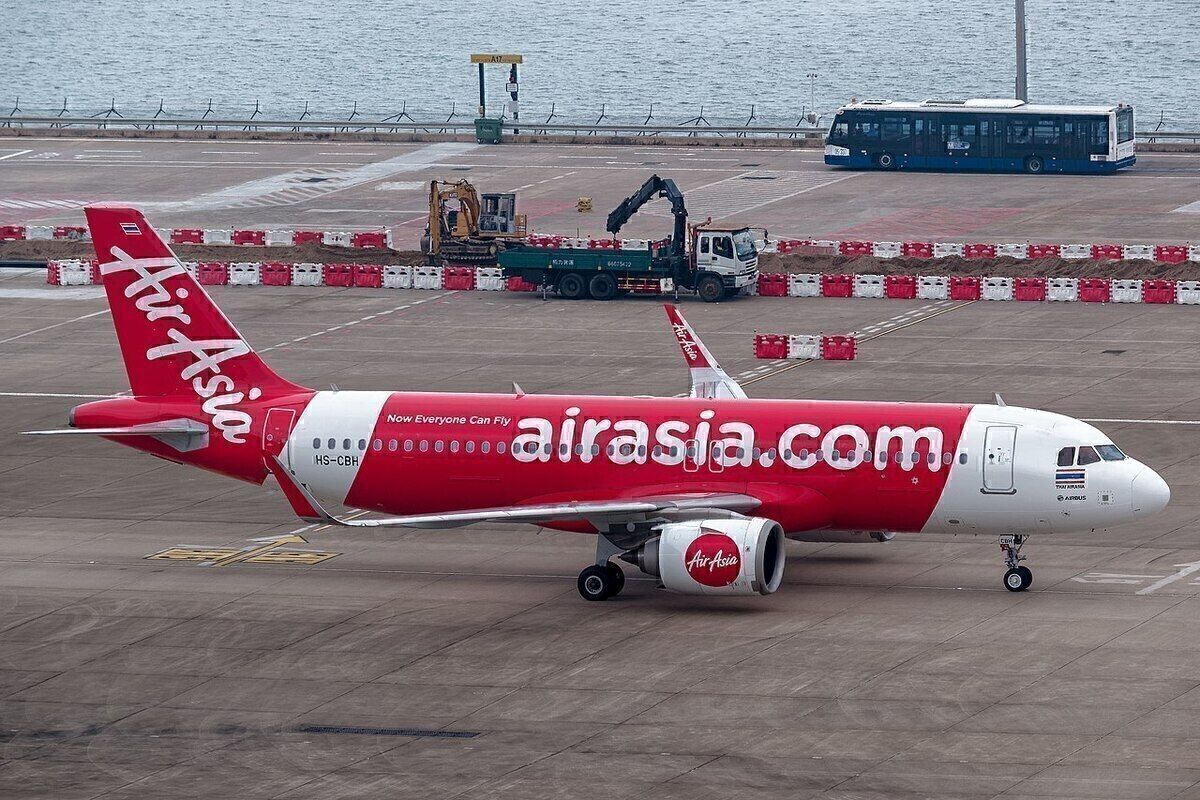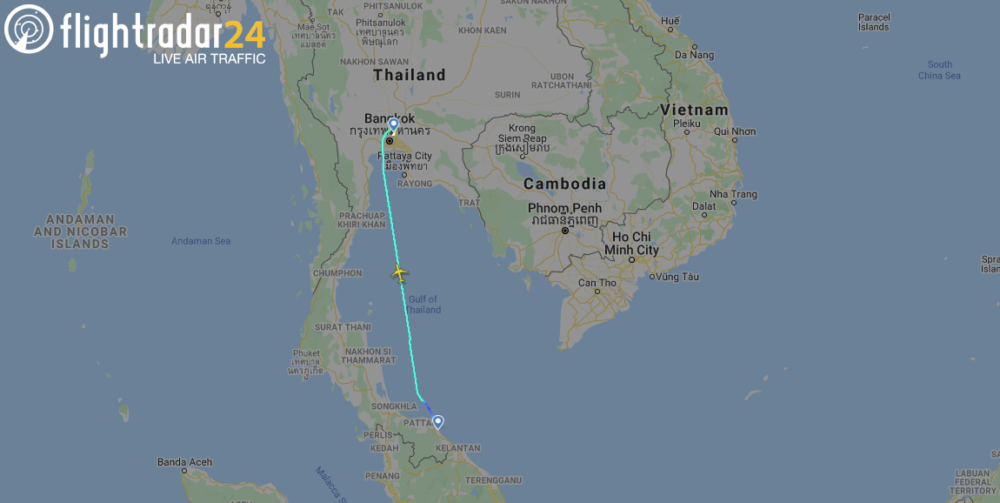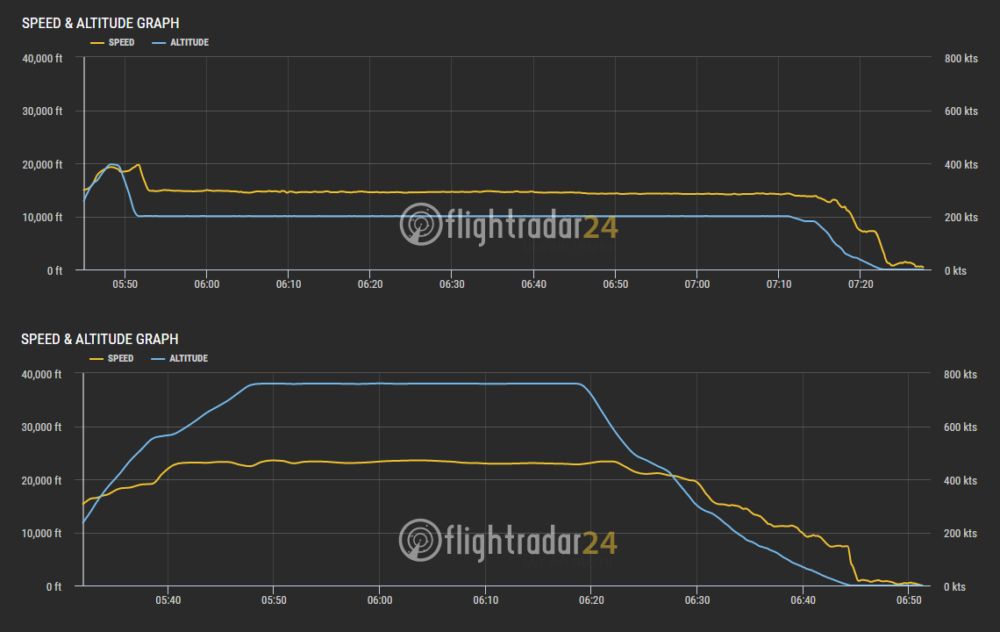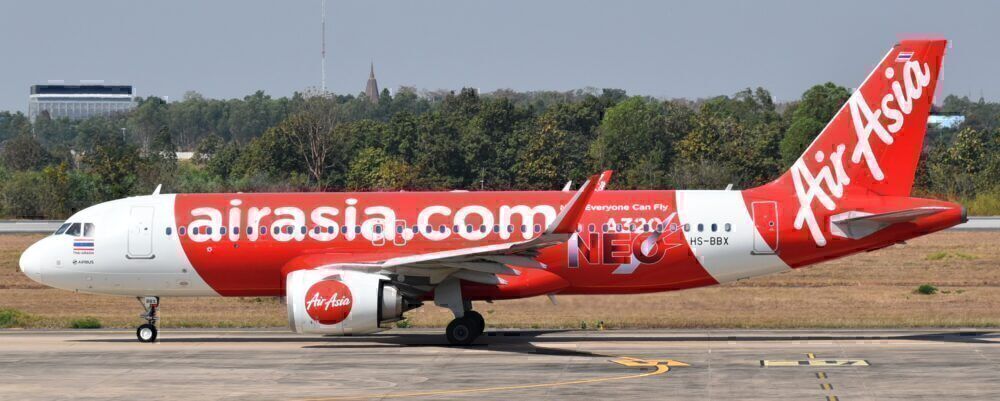On November 5th, a Thai AirAsia A320neo experienced a pressurization incident on a flight from Narathiwat to Bangkok in Thailand. The incident, which happened during the aircraft's initial climb from the origin airport, involved the need to wear oxygen masks and make an emergency descent. Interestingly, the crew decided to continue with the flight, arriving safely at Bangkok's Don Mueang airport.
Incident details
According to The Aviation Herald, the Thai AirAsia A320neo was performing flight FD-3131 from Narathiwat (NAW) to Bangkok Don Mueang (DMK) in Thailand. Data from FlightRadar24.com shows that this is a daily service that takes 75-90 minutes to complete, usually leaving Narathiwat at or just before 12:30 local time.
On November 5th, the aircraft, registered as HS-CBH, was climbing out of Narathiwat when the crew stopped the climb at about FL200 (approximately 20,000 feet). The crew donned their oxygen masks and commenced an emergency descent to FL100 (approximately 10,000 feet) due to a "CAB PR EXCESS CAB ALT" warning. This type of warning is triggered by the cabin pressure sensor.
Rather than diverting and returning to Narathiwat, the aircraft continued to Bangkok, landing safely at Don Mueang Airport about 90 minutes later.
Thailand's AIB has rated the incident as serious and opened an investigation accordingly.
Stay informed: Sign up for our daily aviation news digest.
The incident aircraft
The aircraft involved in this incident is shown to be a two and a half-year-old A320neo registered as HS-CBH. Powered by two CFM LEAP-1A engines, the jet was delivered new to Thai AirAsia in March of 2018 and has only ever flown with the airline.
As with all AirAsia narrowbodies, the aircraft is configured to be all-economy-class. This A320 had 186 seats.
According to FlightRadar24.com, HS-CBH is back in the air, operating as many as eight flights per day across Thailand.
The decision to continue
It's quite interesting that the crew decided to continue on with the journey, as we would expect to see a diversion to the nearest airport after an emergency descent. Indeed, this has happened with similar loss-of-pressure incidents we've reported on, including an airBaltic Dash 8 and an Aeroflot SSJ100.
In this case, we would guess that the crew deemed it safe to continue onwards to Bangkok as the issue was related to pressurization rather than one of its powerplants (although we have seen cases of this as well). It's also likely that Narathiwat would have lacked certified maintenance to deal solve the issue.
Do you think the crew should have returned to the origin airport? Or did it make the right call to continue on to its destination? Let us know in the comments.
Simple Flying contacted AirAsia seeking a statement and inquiring about the crew's decision not to divert. At the time of publication, no response has been received from the airline.




